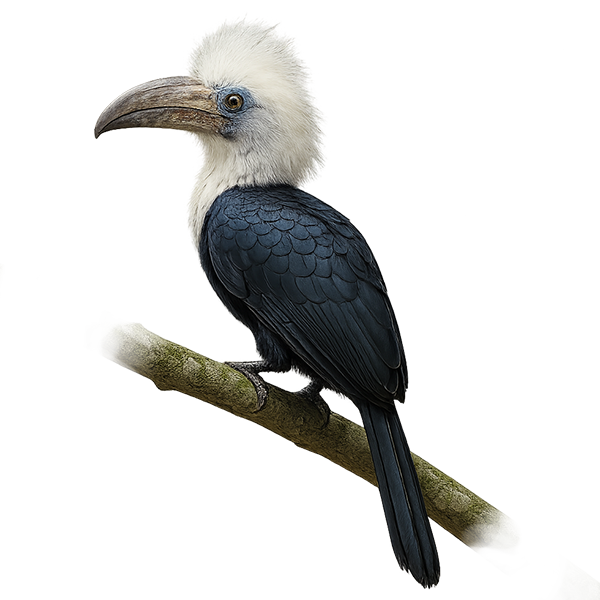Your wildlife photography guide.
Explore the white-crested hornbill in detail, study its behavior, prepare your shots.
Where to observe and photograph the white-crested hornbill in the wild
Learn where and when to spot the white-crested hornbill in the wild, how to identify the species based on distinctive features, and what natural environments it inhabits. The WildlifePhotographer app offers tailored photography tips that reflect the white-crested hornbill’s behavior, helping you capture better wildlife images. Explore the full species profile for key information including description, habitat, active periods, and approach techniques.
White-crested Hornbill
Scientific name: Horizocerus albocristatus

IUCN Status: Least Concern
Family: BUCEROTIDAE
Group: Birds
Sensitivity to human approach: Suspicious
Minimum approach distance: 10 m
Courtship display: February to April
Incubation: 23-25 jours
Hatchings: March to May
Habitat:
Tropical forests, rainforests, wooded savannas
Activity period :
Primarily active during the day, with peak activity in the morning and late afternoon.
Identification and description:
The White-crested Hornbill, or Horizocerus albocristatus, is a fascinating bird found in the tropical forests of West and Central Africa. Its most distinctive feature is its striking white crest, contrasting with its black and brown plumage. It measures about 50 cm in length and has the curved beak typical of hornbills. This bird is often seen in small groups, feeding mainly on fruits, insects, and small animals. Its call is a mix of whistles and croaks, often heard in the dense canopy. Although relatively common in its habitat, deforestation poses a threat to its populations.
Recommended lens:
400mm – adjust based on distance, desired framing (portrait or habitat), and approach conditions.
Photography tips:
To photograph the White-crested Hornbill, it's advisable to use a telephoto lens of at least 400mm to capture detailed images without disturbing the bird. Look for areas where fruits are abundant, as these birds are often attracted there. Be patient and discreet, as they can be suspicious. Use a tripod to stabilize your camera and wait for the right moment to capture the distinctive white crest in natural light.
The WildlifePhotographer App is coming soon!
Be the first to explore the best nature spots, track rutting seasons, log your observations, and observe more wildlife.
Already 1 432 wildlife lovers subscribed worldwide

